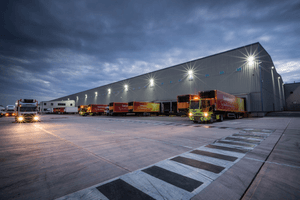This article is from the Australian Property Journal archive
AFTER sensationally quitting the high-rise apartments market over 13 years ago, Stockland is making a comeback, marking its return to Sydney with the launch of Stanton Place, a boutique development in Rosebery, in the inner south.
Set to launch in early 2025, Stanton Place is located in Rosebery and the development will comprise 144 apartments spread across three buildings, offering a range of one-, two-, and three-bedroom layouts, along with terraces and sky homes.
Rosebery, once primarily an industrial area, is undergoing gentrification and increasingly becoming a sought-after locale due to its proximity to Zetland, Surry Hills and Sydney’s CBD.
Stockland executive general manager of apartments Ben Christie said with a focus on sustainability, community, and high-quality design, the developer’s return to the high-rise apartment market is set to offer new opportunities for those seeking to live in the heart of Sydney’s flourishing urban landscape.
“Urban renewal is about the evolution of our cities,” Christie said. “We are excited to reimagine the concept of the urban neighbourhood, where design and community connectivity elevate quality of life.”
“Our aim is to create vibrant, liveable urban communities where people feel connected to their surroundings,” he added.
The timing of Stockland’s return comes as Australia faces ongoing undersupply of housing and the increasing appeal of apartments due to their more affordable price points compared to detached homes.
Stockland expects these conditions to support the medium-term growth of the apartment sector, particularly in major urban centres.
Stockland first ventured into apartment projects in 1962 but in 2011 the developer sensationally called it quits due to the lack of government support.
Then chief executive Matthew Quinn said “We’ve actually pulled out of high-rise apartments and one of the reasons for that is that it is brain damage. It’s just too hard, so we’re focused elsewhere.
“Unless the government has the courage to say we have to have increased density, which they’re not doing, people will stop coming here because the housing prices are too high or prices will go through the roof and our standard of living will decline,” he warned in 2011.
Fast forward to 2024 and Quinn’s warnings have come true.
Australia is currently facing severe housing undersupply.
According to Charter Keck Cramer, the Sydney apartment development market remained subdued throughout FY2024 with only 7.8K completions and 4.8K apartments launched.
This is down from just 8.3k completions and 6.3k launches in 2023, a figure which was 31% below the previous low seen in the first years of the pandemic.
Looking ahead CKC national executive director Richard Temlett said development market conditions are expected to remain volatile, uncertain and challenging for at least the next six months and there will only be meaningful market momentum once the Reserve Bank cuts interest rates and the Federal Election is decided, as well as when various taxes & charges are rationalised and Government incentives introduced.
Meanwhile the RBA is not expected to cut interest rates at least until May next year, economists forecast.
“Notwithstanding the short-term uncertainty, the industry needs to prepare for the commencement of a very strong and long cycle. This means having a pipeline of sites ready to activate as well as strong relationships or arrangements with builders to construct these projects,” said Temlett.





